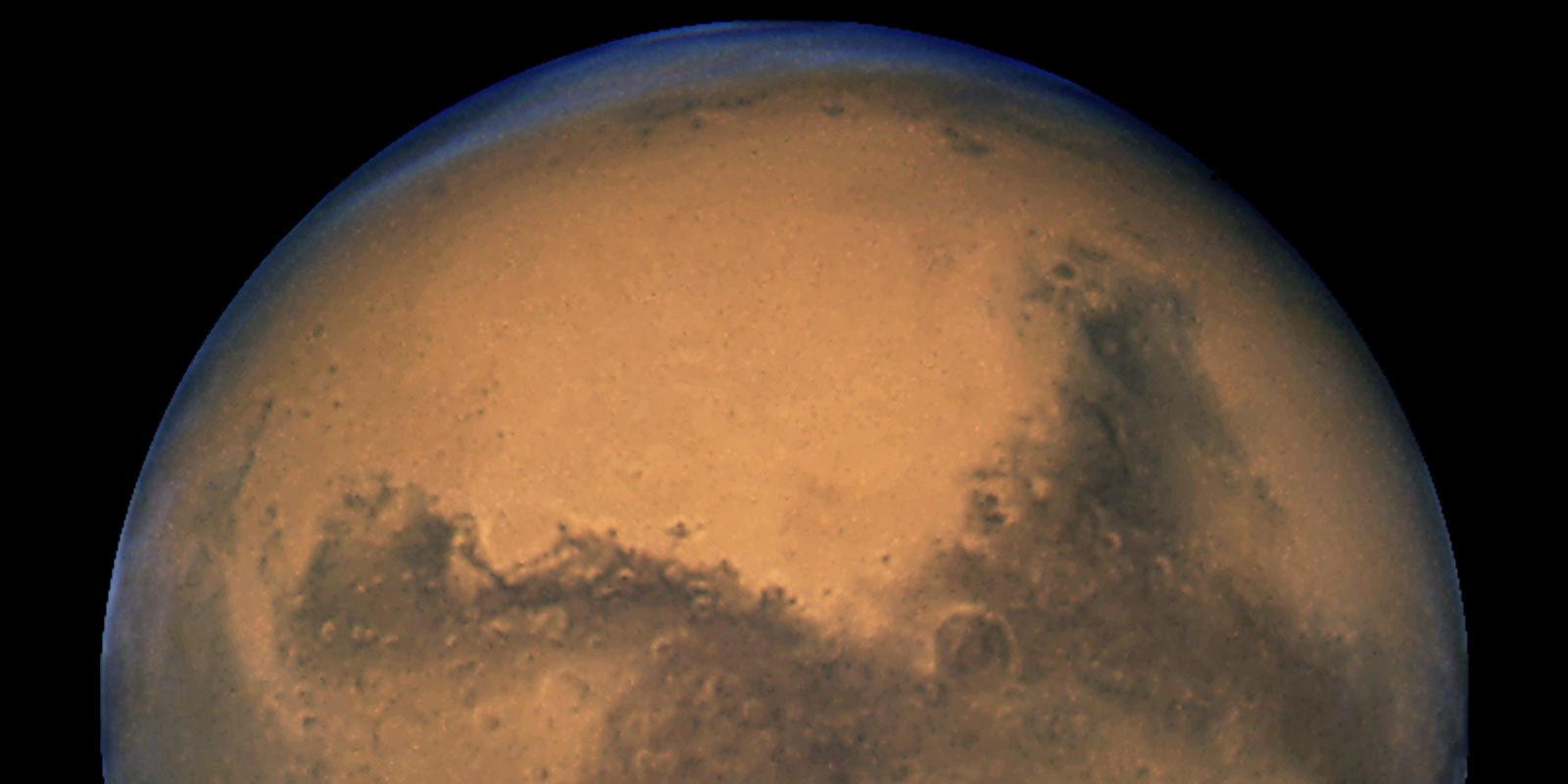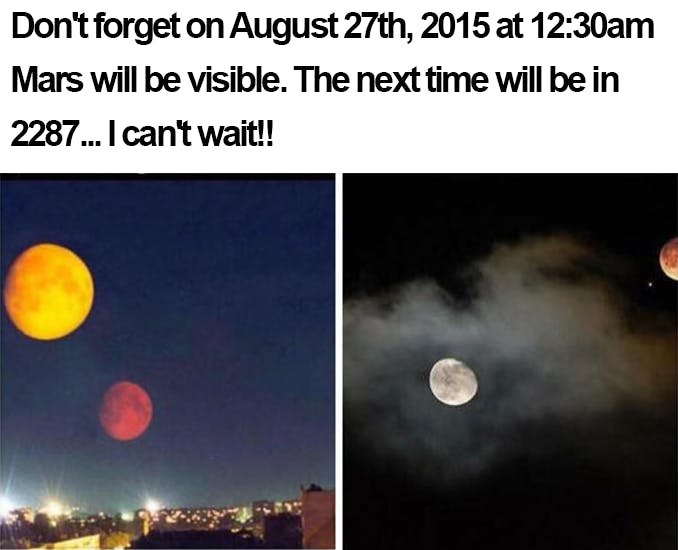If you’ve been on Facebook lately, you may have seen this meme floating around:
In case it’s not obvious, this meme is a hoax. And, interestingly, it’s not the first time this hoax has appeared on the Internet.
In 2005, when hoaxes were mostly circulated via chain email, a message made the rounds that read:
The Red Planet is about to be spectacular.
Earth is catching up with Mars [for] the closest approach between the two planets in recorded history.
On August 27th … Mars will look as large as the full moon.
NO ONE ALIVE TODAY WILL EVER SEE THIS AGAIN.
According to an old branch of NASA’s website, the meme was likely started after astronomers said that Mars would be passing close to Earth… at about 43 million miles (69 million km).
The moon, by comparison is an average of 233,986 miles away. (That varies as the moon’s orbit is not a perfect circle about the Earth.)
But how close would Mars have to get to look as it does in the photos above? On one of Reddit’s most amusing and educational subreddits, /r/theydidthemath, several redditors pitched in to try and reason it out.
The most-upvoted comment from user Digitman801 read,
On my screen the moon is 2cm while mars is 1.4cm.
Angular diameter is 2arctan(d/2D)
Distance to moon is 372,112.28 km on the date listed and the moon is 3,474 km across. So it angular diameter is 0.535 degrees
So our mars must be .3745 degrees. Mars diameter is 4212km. solve back: 644,403.108 km
For those that hate metric, that’s 400,414 miles away. Another user chimed in to note that the “shortest possible distance” between Mars and Earth is 54.6 million km, or 33.9 million miles. (Observed on August 27, 2003).
So no one alive will ever see Mars that close to Earth ever. But don’t dismay! If the red planet were that close to Earth, it would not be fun for anyone. According to the same NASA webpage, at such a proximity Mars would alter Earth’s gravity and cause monster tides.
However, Mars is visible in the early morning in the late summer months. Just before the sun comes up, you can spot it shining bright in the eastern sky.
Photo via NASA/Wikimedia (PD)



